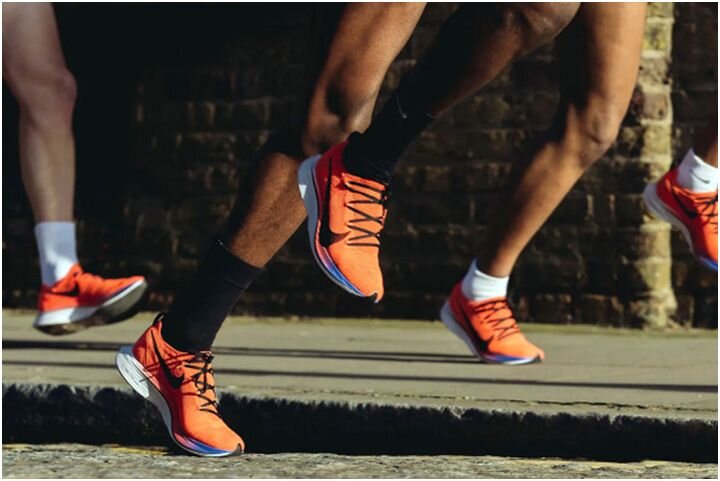![Nike Vaporfly Running Shoe [Image courtesy WSJ ]](https://fabbaloo.com/wp-content/uploads/2020/05/Nike1_img_5eb050a0d0dc3.jpg)
Charles Goulding and Preeti Sulibhavi look at the use of 3D printing in Olympic events.
3D Printing and the Race to Create the Perfect Running Shoe
The 3D Printed Nike Vaporfly shoe (see our previous Fabbaloo article on the Nike Vaporfly) has been approved by World Athletics Organization in time for the 2020 summer Olympics in Japan.
In a decision illustrating first-mover advantage, the Nike running shoes are getting grandfathered in because they are already available. Competitors’ shoes will only be approved if they are already available on the open market for 4 months as of April 30, 2020. Simply stated, if a competitor didn’t already have their comparable shoe on the market as of January 1, 2020, they are out of the Olympics game, so-to-speak.
Obtaining this major business advantage has affirmed Nike and its philosophy, “Just Do It.” The newly issued regulations limit the thickness of the sole of the shoes to 40 millimeters, which is greater than the 36-millimeter thickness of the current Vaporfly. The new ruling is only applicable to certain prescribed elite events. In the short run, Nike’s competitors may want to focus on non-elite events, particularly if the product is considered a disruptive technology.
The ongoing innovation related to 3D printing for shoes is eligible for R&D tax credits.
The Research & Development Tax Credit
Enacted in 1981, the now permanent Federal Research and Development (R&D) Tax Credit allows a credit that typically ranges from 4%-7% of eligible spending for new and improved products and processes. Qualified research must meet the following four criteria:
-
Must be technological in nature
-
Must be a component of the taxpayer’s business
-
Must represent R&D in the experimental sense and generally includes all such costs related to the development or improvement of a product or process
-
Must eliminate uncertainty through a process of experimentation that considers one or more alternatives
Eligible costs include US employee wages, cost of supplies consumed in the R&D process, cost of pre-production testing, US contract research expenses, and certain costs associated with developing a patent.
On December 18, 2015, President Obama signed the PATH Act, making the R&D Tax Credit permanent. Since 2016, the R&D credit can be used to offset Alternative Minimum Tax (AMT) or companies with revenue below $50MM and, startup businesses can obtain up to $250,000 per year in cash rebates that can be applied directly to payroll taxes.
Absorbing the Shock
While the Nike Vaporfly 3D printed shoe has sent shockwaves through the distance-running athletic industry, it is not entirely new. To help absorb the shock to the industry, it should be known that certain athletes began using the Nike Vaporfly in 2016. With its thick midsole and built-in carbon fiber plate, they are designed to generate and extra spring for every step as well as help absorb the shock and impact.
While Vaporfly enthusiasts highlight the beneficial qualities of the shoe, critics raise concerns over the added advantage. Critics in the racing community contend that the shoe is a type of “mechanical doping,” and that the improved running efficiency that comes with the shoe also comes with a high price tag. They argue that running should not be about who has the best technology, but about the endurance of the athlete.
In these ever-changing technological times, integrating athletics with technology may be an inevitable outcome that pushes the boundaries of innovation as well as athletics. This technology may also help to minimize injuries sustained by athletes as well.
These shoes are designed to athletes shatter records and help them win medals. The question becomes is it wrong to push the boundaries of athletes as well as that of technology? The same human endurance argument could have been made generations ago when sneakers were just emerging as a new type of athletic shoe. That argument did not stick then and it may not now either.
A Game Changer
![Vaporfly's Added Value [Source: NYPost ]](https://fabbaloo.com/wp-content/uploads/2020/05/image-asset_img_5eb050a115a69.jpg)
The World Athletics Organization has found itself in a challenging position. The 3D printed Vaporfly has already been worn by elite event-winners. In fact, athletes are singing the praises of the Nike Vaporfly. These athletes see a disparity between the Vaporfly and other running shoes.
Prohibiting Nike’s competitors from enjoying these same opportunities seems unsustainable. The World Athletics Organization should endeavor to establish healthy competition for this technology, in addition to designing a regulatory framework applicable to all shoe designs as soon as it is practicable.

